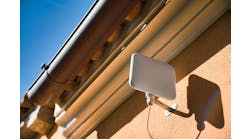Latest from FTTx/Optical Networks
FTTH Fiber Indexing May Help
Customers binge-stream video and gaming, upload hours of vacation videos and use several social media apps at the same time. This pushes broadband to the limit, and let’s face it: tests the patience of a need-it-now-and-fast public. This is why fiber-to-the-home (FTTH) is so important. That said, it’s easier said than done.
Typical FTTH deployments require extensive engineering and field measurement prior to deployment, and require heavy involvement of skilled fiber technicians during the construction phase. This drives up the cost and reduces the speed at which operators can deploy FTTH networks.
Fiber indexing architectures can substantially reduce the time needed to actually build an FTTH network. At the same time, they can suppress the need for skilled fiber technicians — all while guaranteeing the quality of the network.
There are usually 2 architectures in FTTH deployments, each facing twin challenges of deployment time and cost. The weak link is how terminal connections are made.
1. Star topology — Fiber splicing is done at the hub where individual cables are laid from the hub to each terminal.
2. Daisy-chain topology — Fiber cable is run through the streets and a hardened terminal is spliced onto the cable. It forces significant compromises in deployment time while increasing costs and the need for expensive, specialized labor.
Indexing takes the best attributes of both architectures to create a no-splice option that greatly reduces deployment time and cost. Factory pre-terminated connectivity eliminates the need for splicing in the field. Starting with the first indexed terminal, which supports multiple drop cables, the connectorized fiber cable stub is connected to the fiber distribution hub. From there, subsequent indexed terminals are daisy-chained together in a linear topology. The indexed terminal is equipped with factory-terminated, multi-fiber cable tails and connectors where some fiber strands are dropped, and the rest pass through unchanged. The dropped fibers can service PON subscribers, businesses, or cell site traffic. Integrated PON splitters, off-terminal splitters, CWDM, and DWDM modules options allow for a variety of traffic types and services to be supported. This continues down the chain at each indexed terminal.
There are several variations of this architecture, so it meets requirements of many deployment scenarios.
It lays the foundation for a multi-service fiber access network that converges residential, enterprise and wireless backhaul/fronthaul traffic. By using the same components over and over throughout the network, it reduced the total amount of cabling required. That translates into significant network installation times.
Other benefits of fiber indexing include:
Flexibility without signal loss problems — There is little impact on signal strength, contrary to what may be expected from cascaded terminals. Low loss hardened connectors maintain good link budgets even to the end of the daisy-chain.
Doubled fiber utilization — By connecting the last terminal in the fiber run to any fiber distribution hub, the network can then feed the reverse path of the terminal to the subscriber’s drop cable port.
Simple cable management — The indexing solution comes with integrated overlength management to allow fast installation. Any remaining cable stays on the spool for less splicing, cable strains or kinks.
Streamlined operations — There are fewer part numbers, simpler inventory management and faster maintenance. Factory-prepared cables and terminals ensure high-quality performance and prevent a technician from handling fibers and disturbing the signal during installation. Labor hours are also reduced, and site surveys are limited or eliminated.
The bottom line is that everyone communicates. It’s the essence of the human experience. But how we communicate is evolving. Technology is reshaping the way we live, learn and thrive. Enabling that transformation is the network, and fiber indexing is an innovative way to make sure it happens.




